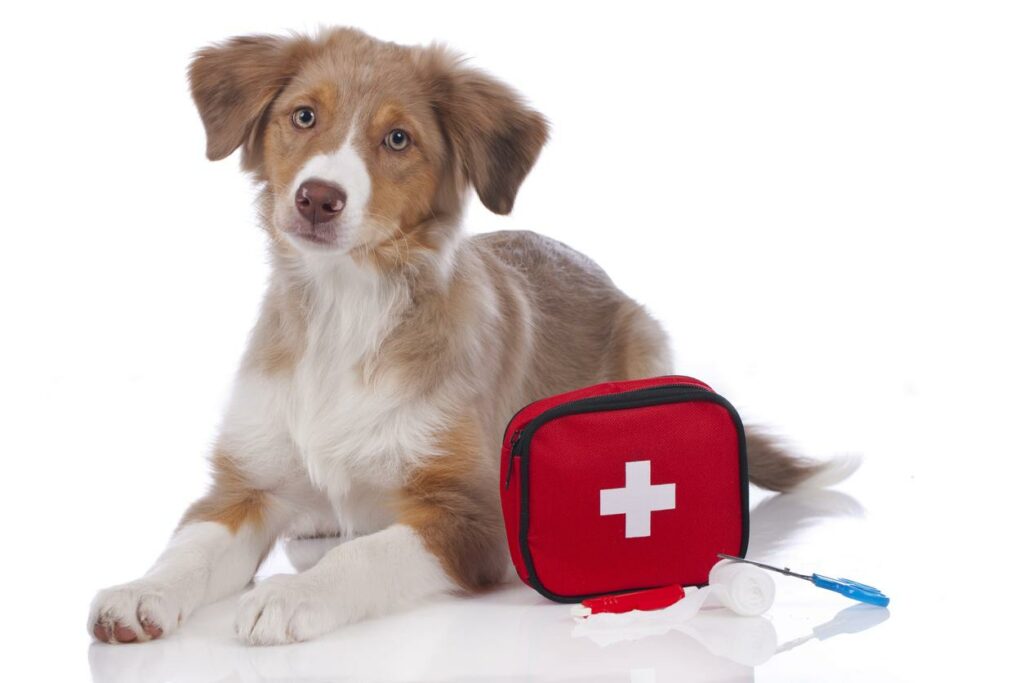Are you prepared to act fast if a sudden emergency arises with your pet? Knowing basic first aid can make all the difference in your pet’s recovery from cuts and scrapes to more severe injuries. The whole team at Pine Creek Animal Hospital hope that this information helps.
The Signs of Common Pet Emergencies
Pet owners need to recognize the signs of common pet emergencies. These can include choking, heat stroke, poisoning, trauma/wounds, and seizures. Knowing what to look for and how to respond can help you provide your pet with the necessary care and potentially save its life. Be sure to familiarize yourself with the signs of common pet emergencies and have a plan for handling them.
- Difficulty breathing
- Seizures
- Sudden loss of consciousness or paralysis
- Severe bleeding
- Choking
- Inability to urinate or defecate
First Aid Kits for Pets
One of the essential steps in preparing for a pet emergency is having a well-stocked first aid kit. Your kit should include items such as:
- Gauze
- Adhesive tape
- Bandages
- Antiseptic wipes
- Tweezers
- Thermometer
You may also want to include items specific to your pet’s needs, such as medication or a muzzle. Keep your kit in an easily accessible location and ensure all family members know where it is and how to use its contents.
First-Aid Techniques for Pets
Knowing basic first aid techniques for pets can be the difference between life and death in an emergency. Some standard methods include controlling bleeding and treating burns or wounds. It’s essential to familiarize yourself with these techniques and practice them before an emergency occurs. Consider taking a pet first aid class or consulting your veterinarian for guidance. Remember, in any trouble, it’s essential to stay calm and act quickly to ensure the safety and well-being of your furry friend.
Quick Links for Pet Emergencies
The AVMA provides some quick links for various pet emergencies. Get familiar with each type of emergency and handling so you can act quickly.
Poisoning and exposure to toxins
Seizures
Fractures
Bleeding (external)
Bleeding (internal)
Burns
Choking
Heatstroke
Shock
Pet is not breathing
Pet has no heartbeat
When You Should Contact Your Veterinarian
Even when you know basic first aid techniques, there are some situations where you should seek professional help. If your pet is experiencing severe bleeding, difficulty breathing, seizures, choking, or unconsciousness, it’s vital to seek immediate veterinary care. Also, if your pet has ingested a toxic substanceor a human medication, or is showing signs of a severe illness, it’s critical to consult a veterinarian as soon as possible. Keep our office number, the number to an emergency vet, and the pet poison helpline in your phone where you can quickly find them.
Take Steps to Prevent Emergencies from Happening in the First Place
While accidents can happen, there are steps you can take to prevent them from occurring in the first place. Ensure your pet is current on vaccinations and preventative medications, such as for fleas and ticks. Keep your home and yard free of potential hazards, such as toxic plants, sharp objects, and small objects your pet could swallow.
Final Words
Knowing basic pet first aid is good for every pet parent to know. In this way, you will be ready to handle most emergencies that may arise. However, basic first aid is not a substitute for treatment from a trained veterinarian. At Pine Creek, we stand prepared to help you handle pet emergencies. Our doctors have advanced training in areas of surgery that some general practices cannot offer. We are also equipped to perform most diagnostic and therapeutic services.
If at any time your pet experiences an emergency or you are unsure what is happening with your pet, please contact us. If we are closed, contact an emergency veterinarian for help.
To your family’s health!
Sincerely,
Dr. Ashley Tuma








